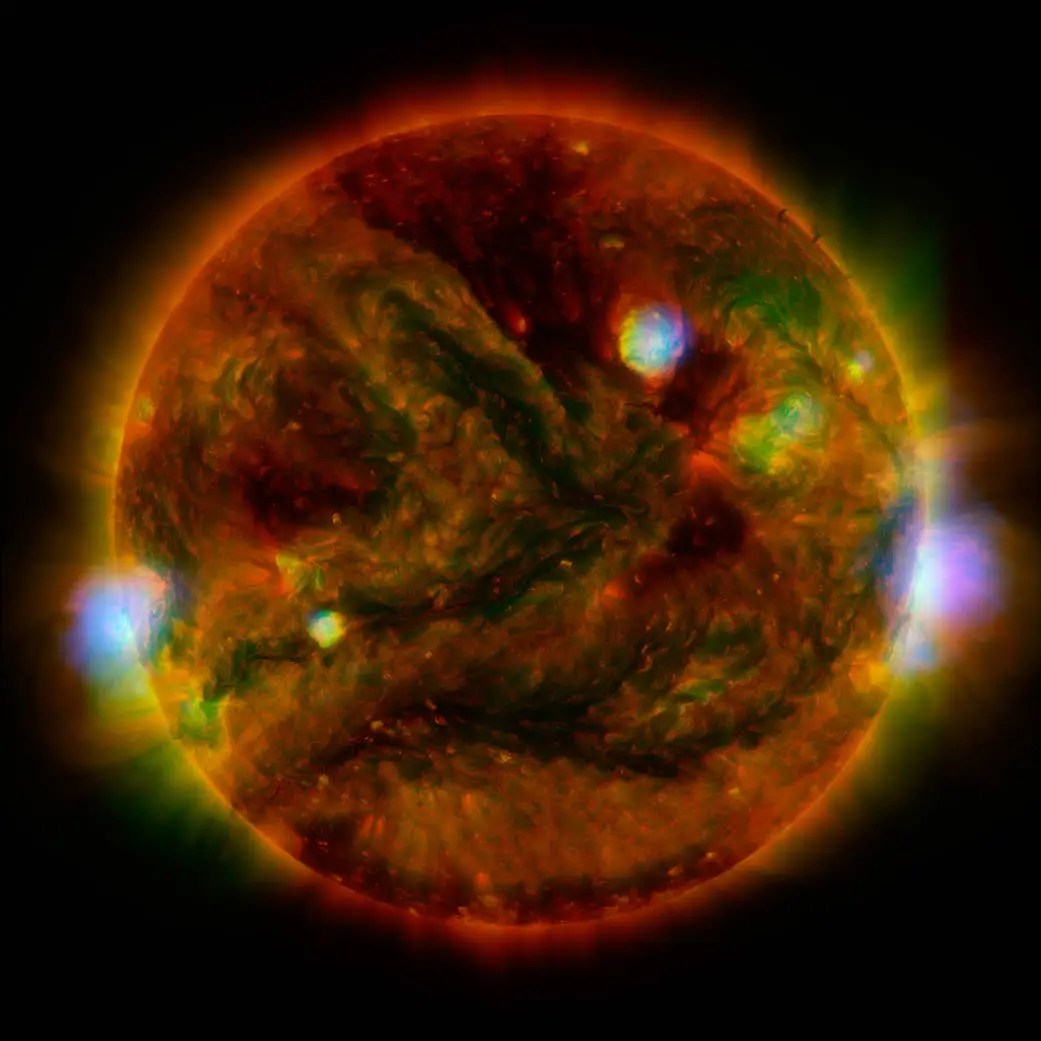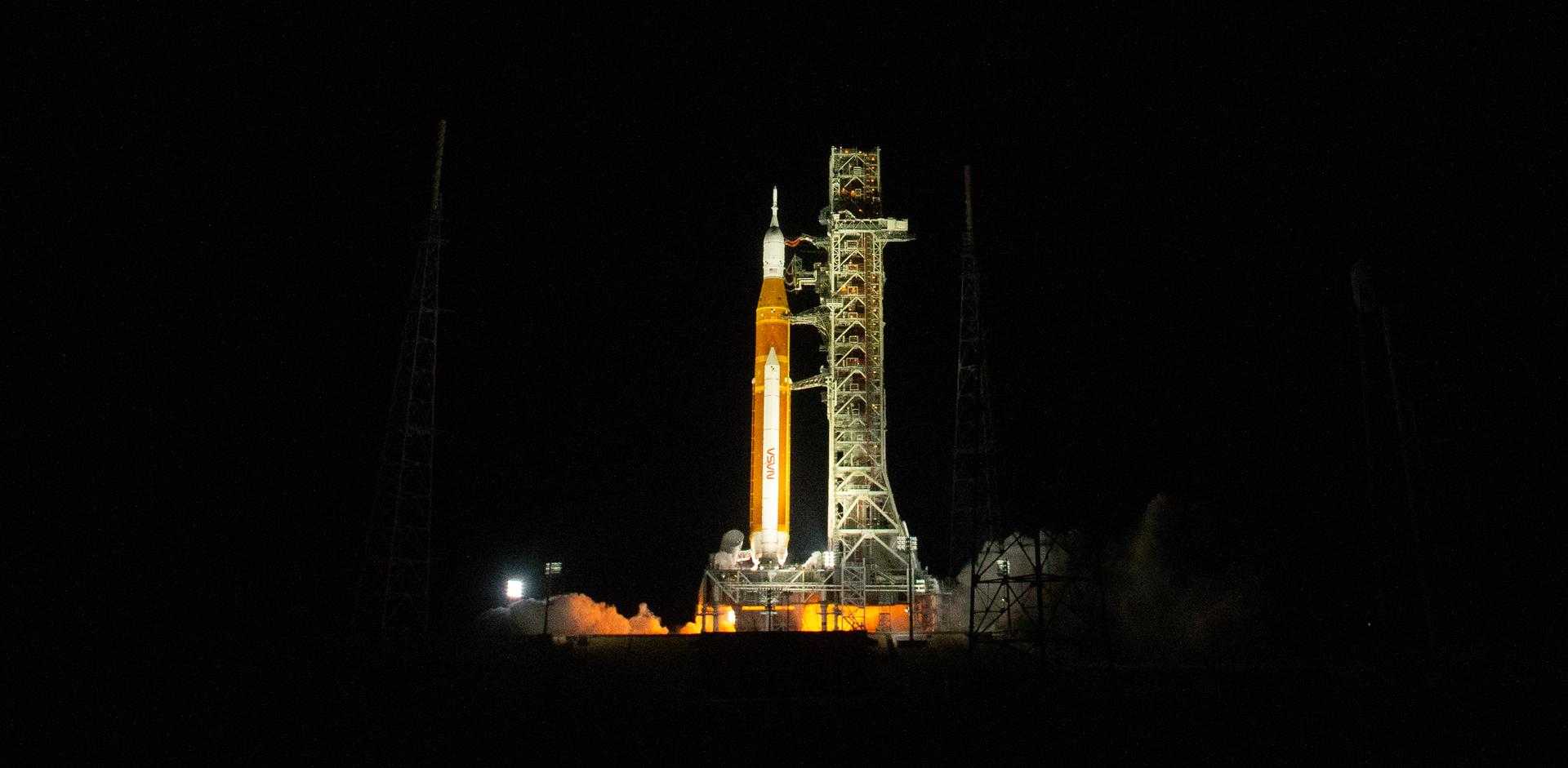Download PDF: Uncertainty Propagation for Model Validation
The Space Launch System (SLS) integrated system consists of a number of components that are assembled into an integrated launch vehicle (LV), Figure 1. Finite element models (FEM) of these components are developed by various contractors and NASA centers, reduced to Hurty/Craig-Bampton (HCB) models, and assembled to represent the flexible body characteristics of the SLS integrated system. Each assembled model represents the SLS integrated system dynamics at a single time in flight, with multiple models being assembled and analyzed to capture the flexible dynamics throughout flight. The assembled models are used for control system stability and performance analysis, coupled loads analysis, and pogo stability analysis.
There is some level of uncertainty in every model, which flows to a level of uncertainty in predicted results. The purpose of uncertainty quantification (UQ) is to provide statistical bounds on prediction accuracy based on model uncertainty. This is distinct from model updating, which attempts to modify models to improve their accuracy. UQ does not improve the accuracy of models, but accepts the fact that the models are inaccurate and attempts to quantify the impact of that inaccuracy on predicted results.
The NESC team developed an alternate technical approach for addressing model uncertainty at the component level and propagating it to system-level results. It is distinct from more commonly used UQ approaches, which are based on varying model parameters. The approach is referred to as the hybrid parametric variation (HPV) method. It combines a parametric variation of the HCB fixed interface modal frequencies with a nonparametric variation (NPV) method that randomly varies the HCB mass and stiffness matrices as Wishart random matrix distributions. The major advantage of the NPV method is that it covers errors in model form, and experience on numerous aerospace programs reveals that almost all errors in FEMs are in form rather than parameter values.
Previous work on UQ for the Mars 2020 powered descent vehicle attitude control found that the NPV method did a better job of capturing uncertainty in the measured transfer functions of the Mars Science Laboratory than parametric methods. In particular, the NPV method introduces a greater degree of uncertainty in mode shape than parametric methods, resulting in matching observed data more closely. However, the NPV method tends to introduce relatively little frequency uncertainty, so it was found that the HPV method, which combines random parametric frequency variations with the NPV method can better “tune” uncertainty at the HCB level to match observed test results.
The HPV method applied to the SLS system anchors uncertainty at the HCB level to component modal test results by categorizing modes into groups and applying differing levels of frequency variation. The specific variations depend on the degree to which a component FEM has been verified through modal testing. The NPV method is then layered on top of the frequency variation to match modal test self- and cross-orthogonality results. The uncertainty is propagated to the system level using a Monte Carlo approach that generates statistics on system-level results. This provides a UQ method that can be traced directly to available test data, and which can be updated as additional data and better correlated models become available. The HPV method can be applied to any result that is based on HCB dynamic models of the system components or the system modal models if uncertainty can be quantified at that level.
For more information, contact Joel Sills | JSC | joel.w.sills@nasa.gov

























